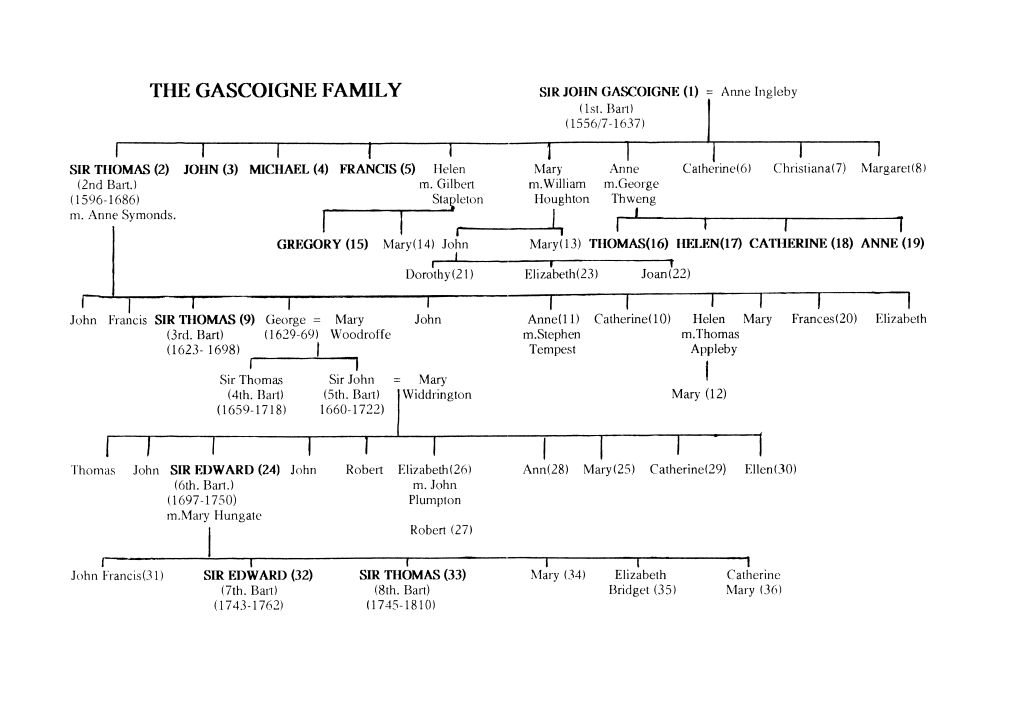
| "Mass is said to be performed in the house of Sir Ed. Gascoigne by Rogers, his chaplain, and in the same town by Mr Paul Gilmore, a reputed priest, at his own lodging.... It does not appear that any Popish School is taught in the parish but there are grounds for suspicion that Paul Gilmore above mentioned is guilty of such practice.... No visitation or Confirmation is understood to have been held by any popish Bishop within the parish.... I can hear of none perverted to the popish Religion for several years past, but one or two at the point of death about four years ago." |